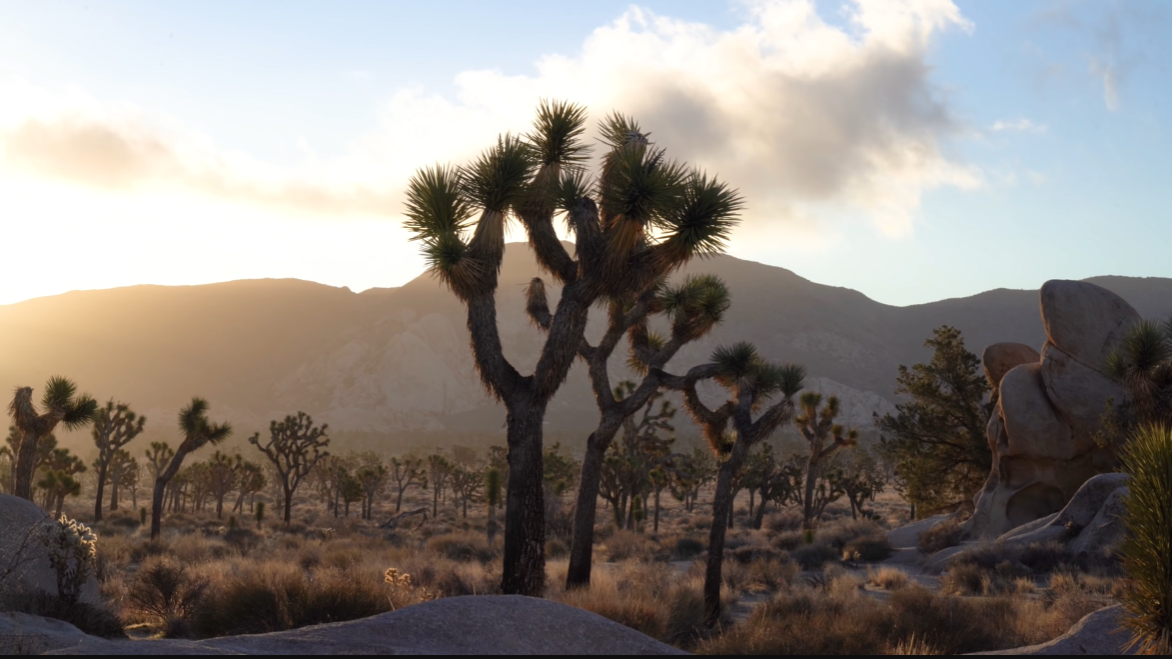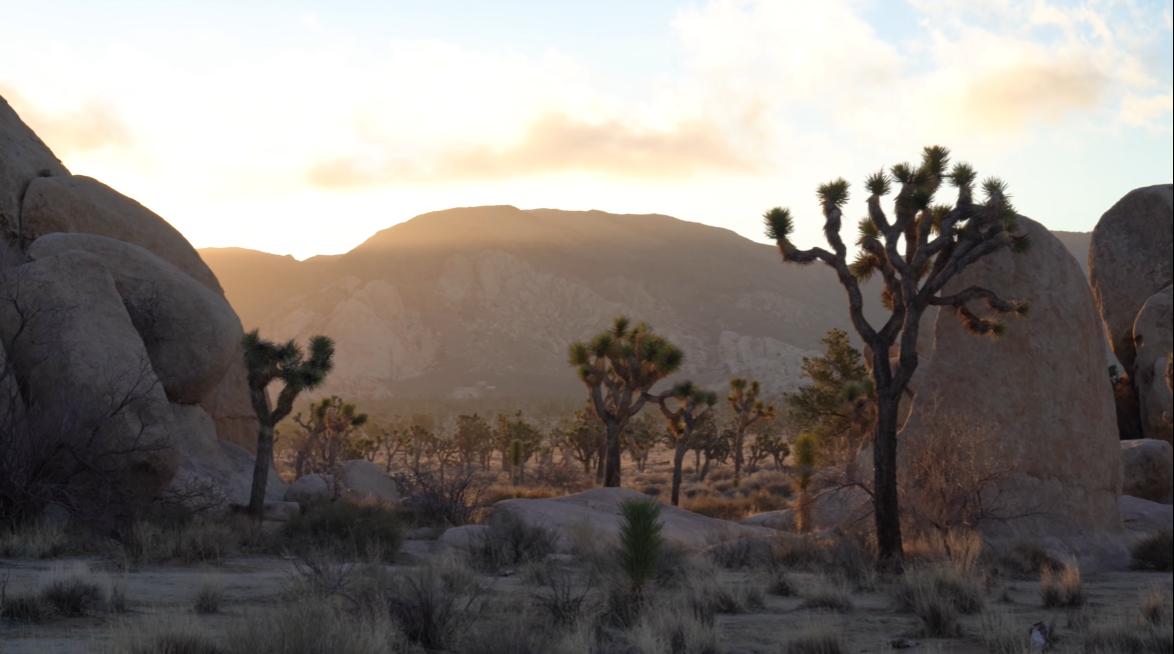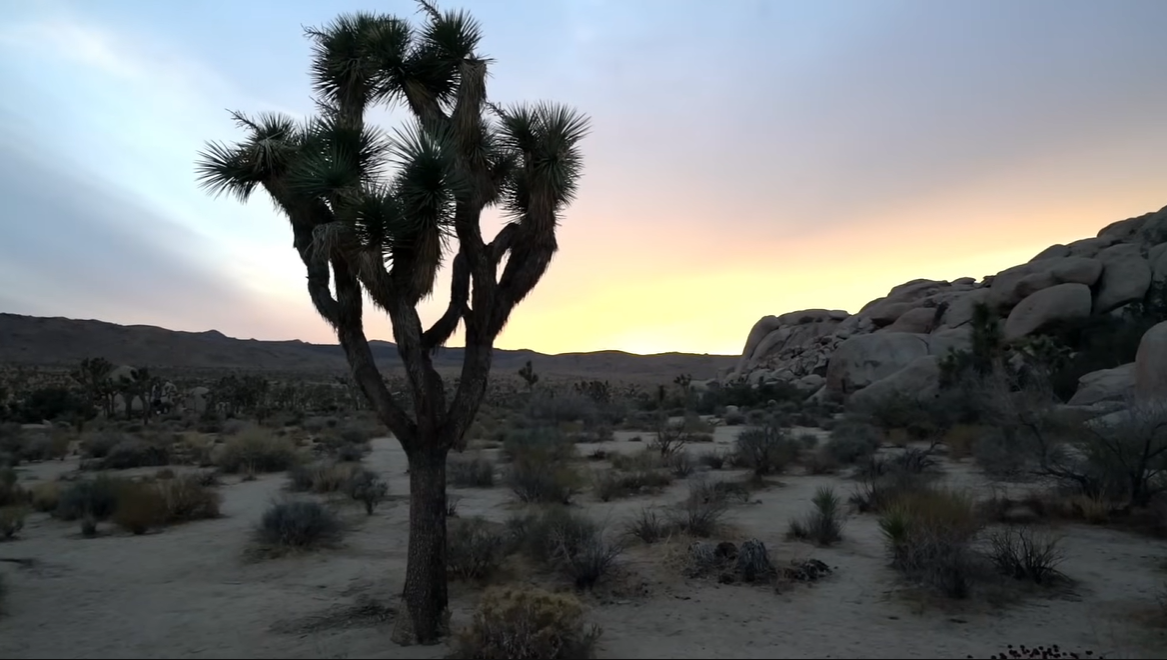Hidden Valley
Hidden Valley in Joshua Tree National Park is one of the park's most captivating and accessible areas, renowned for its unique rock formations, rich biodiversity, and storied past. Located within the Mojave Desert region of the park, Hidden Valley offers visitors an otherworldly landscape of twisted Joshua trees, rugged boulders, and fascinating plant and animal life. This area has earned a reputation as both a haven for rock climbers and an ideal destination for hikers and sightseers eager to experience the natural beauty of Joshua Tree National Park.
.png)
Hidden Valley
.png)
Location and Accessibility
Hidden Valley is conveniently located near the popular Hidden Valley Picnic Area off Park Boulevard, close to the town of Joshua Tree and the park’s west entrance. Its central location makes it an easy stop for visitors, whether they’re spending a day in the park or exploring multiple attractions. Hidden Valley is well-marked by signs along Park Boulevard, and there’s a parking area nearby, providing convenient access to the Hidden Valley Nature Trail and various rock climbing spots.
.png)
Hidden Valley
.png)
Historical Significance: Outlaws and Legends
According to local legend, Hidden Valley was once used as a hideout by cattle rustlers in the 19th century. The surrounding rock formations created a natural corral where stolen cattle could be concealed from law enforcement and rival ranchers. While hard historical evidence is scarce, the story adds an aura of mystery and Wild West lore to the already dramatic setting.
In the 1930s, Minerva Hoyt, a conservationist who helped create Joshua Tree National Monument (now a national park), promoted Hidden Valley as a natural treasure. Later, desert pioneer Bill Keys blasted an opening in the rocks to make the valley more accessible, allowing people and livestock to pass through what is now the Hidden Valley trailhead.
.png)
Hidden Valley
.png)
Hiking and the Hidden Valley Nature Trail
One of the most popular ways to experience Hidden Valley is via the Hidden Valley Nature Trail, a 1-mile loop that provides a moderately easy walk through the heart of the valley. This well-marked trail offers interpretive signs along the path, which highlight the area’s unique geology, flora, and fauna, making it an educational as well as a scenic experience.
The trail winds through a stunning landscape of rock formations, cacti, and Joshua trees, providing numerous photo opportunities and a chance to witness some of the park’s most iconic scenery up close. Visitors can take their time to explore side paths, scrambling up rock outcroppings to gain a higher vantage point or relax in the shade of large boulders. The trail is family-friendly, and because of its relatively flat terrain, it is suitable for hikers of all skill levels.
.png)
Hidden Valley
.png)
Geology and Rock Formations
Hidden Valley is celebrated for its surreal, rugged rock formations that were sculpted over millions of years by wind, water, and the extreme temperature fluctuations of the desert. These formations are primarily composed of monzogranite, a type of rock known for its durability and smooth texture. The boulders vary in size, from large slabs to towering monoliths, and feature a range of unusual shapes and textures, which make them fascinating to explore.
The erosion that shaped Hidden Valley’s boulders created natural walls around the valley, giving it an enclosed and somewhat secluded atmosphere. This unique geology has made the area a mecca for rock climbers, who are drawn to the challenging and varied climbing routes available here. Many of these formations, such as the “Cyclops” and the “Wall Street Mill,” are beloved landmarks for climbers and hikers alike.
.png)
Hidden Valley
.png)
Rock Climbing Haven
Hidden Valley is one of the premier rock-climbing destinations in the United States. Known for its varied climbing routes, the area attracts climbers from around the world who come to challenge themselves on the valley’s granite faces. The routes range in difficulty, with options for both beginner and advanced climbers, and include well-known climbs like “The Old Woman” and “Intersection Rock.”
The climbing season in Hidden Valley generally lasts from fall through spring when temperatures are cooler. In winter, climbers may experience perfect conditions with sunny skies and mild temperatures, while in summer, the area can be extremely hot, making climbing challenging. Joshua Tree’s rock-climbing community has long been a cornerstone of the park’s culture, and Hidden Valley remains at the heart of this community, offering a vast array of routes and bouldering spots.
.png)
Hidden Valley
.png)
Flora and Fauna
Despite the arid conditions, Hidden Valley supports a diverse range of plant and animal species adapted to the harsh desert environment. The iconic Joshua tree, for which the park is named, is prominent throughout the valley. These twisted, spiky trees are a type of yucca plant and are uniquely adapted to the desert, thriving in areas with sparse rainfall and poor soil. They provide shelter and food for many of the valley’s animal residents.
Other notable plants in Hidden Valley include creosote bushes, Mojave yuccas, pinyon pines, and cholla cacti. In spring, the valley may be adorned with vibrant wildflowers such as desert marigolds, blazing stars, and desert dandelions, adding a burst of color to the landscape.
Hidden Valley is also home to various wildlife, including desert tortoises, bighorn sheep, coyotes, and numerous species of lizards and snakes. Bird enthusiasts can spot species like cactus wrens, western scrub-jays, and red-tailed hawks soaring above. Many animals are most active at dawn or dusk, taking advantage of the cooler temperatures, so early or late visits can offer the best chances for wildlife sightings.
.png) |
| Hidden Valley |
.png)
Hidden Valley
.png)
.png)
Hidden Valley
.png)
Visiting Tips and Safety
For those planning a trip to Hidden Valley, a few essential tips can enhance the experience:
1. Best Time to Visit: Fall through spring is the ideal time to visit Hidden Valley, as summer temperatures can reach over 100°F. Early mornings and late afternoons are cooler and less crowded.
2. Weather: The desert climate is characterized by extremes; temperatures can drop rapidly in the evenings, even after a hot day. Dress in layers and bring sun protection.
3. Hydration: Due to the dry environment, dehydration can set in quickly. Be sure to carry plenty of water, especially when hiking or climbing.
4. Respect Wildlife: Animals in the valley are adapted to desert life and play a vital role in the ecosystem. Observe wildlife from a distance and do not disturb or feed animals.
5. Trail Etiquette: Hidden Valley is a popular area, so be mindful of other visitors, stay on marked paths, and pack out all waste.

Hidden Valley

Conclusion
Hidden Valley encapsulates everything that makes Joshua Tree National Park special: surreal landscapes, fascinating history, biodiversity, and accessible adventure. Whether you're climbing its rock walls, hiking its scenic loop, or simply soaking in the silence of the desert, Hidden Valley offers an unforgettable glimpse into the timeless beauty of the Mojave.
If you're planning a visit to Joshua Tree, make sure Hidden Valley is at the top of your list — it's not just a destination; it's a journey into the heart of the desert.

No comments:
Post a Comment